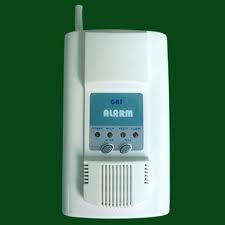Combustible Gas Detectors
A combustible gas detector is a device that allows the user to detect and analyze any nearby concentrations of combustible gases. Combustible gases are simply gases that will catch on fire when mixed with oxygen and ignited. There are many different types of combustible gases and each one requires its own method of analysis. Some gases are lighter than air while other gases or heavier. This means that each gas has its own level of concentration that it must meet before it can combust. Because of this, combustible gas detectors are specifically made to detect a wide variety of combustible gases and have several alarms to alert to the user to varying levels of concentration.
How Combustible Gas Detectors Work
To understand how combustible gas detectors work, one must first understand that there are two main types of combustible gas detectors: infrared and catalytic. Infrared sensors use an invisible beam of infrared light, much like a laser pointer or remote control, between a light transmitter and a light receiver to detect the presence of combustible gases. When a gas passes through the beam of infrared light, the beam is distorted and the detector’s built-in computer system can recognize what kind of gas it is based on the way the light is distorted. Catalytic sensors use a copper wire coated in platinum to oxidize any gases that happen to come in contact with it, producing a low level of heat that changes the wire’s resistance. Again, the detector’s built-in computer can indicate the change in resistance and set off an alarm.
Types of Combustible Gas Detectors
As was mentioned in the previous paragraph, the two most popular methods of combustible gas detection are through the use of infrared and catalytic sensors, each of which has its own advantages and disadvantages. Infrared sensors are more durable and last longer because the gases do not come in contact with the actual detector. Flooding does not affect infrared sensors and they require less calibration due to the detector’s ability to constantly realign its beam. Catalytic sensors are less susceptible to interference from dust and dirt, can detect most hydrocarbons and hydrogen, and humidity, condensation, pressure, or temperature do not affect them.
Applications of Combustible Gas Detectors
Combustible gas detectors are widely used for safety purposes including alerting the user to toxins, fire, and other harmful materials as well as preventing exposure to these substances. Miners frequently use combustible gas detectors to detect the presence of combustible gases inside mine shafts, underground tunnels, and beneath rock. This is very important because flammable and explosive gases are often found in areas known as “gas pockets” within mines. When miners dig into these gas pockets, a fire or explosion is likely to occur and a fallout can injure, trap, or kill the miner. Likewise, toxin and poison control specialists often use combustible gas detectors to scan war zones and crisis areas before allowing unprotected personnel into the area.
Where To Find Combustible Gas Detectors
Combustible gas detectors are not commonly found in stores but are easily found if the buyer knows where to look. Combustible gas detectors can be found on popular marketplaces such as Amazon and eBay as well as less known websites such as MS North America, Grainger, and CSN Stores. Likewise, combustible gas detectors can be found in store at Sears, Walmart, and Lowes.


Comments - One Response to “Combustible Gas Detectors”
Sorry but comments are closed at this time.